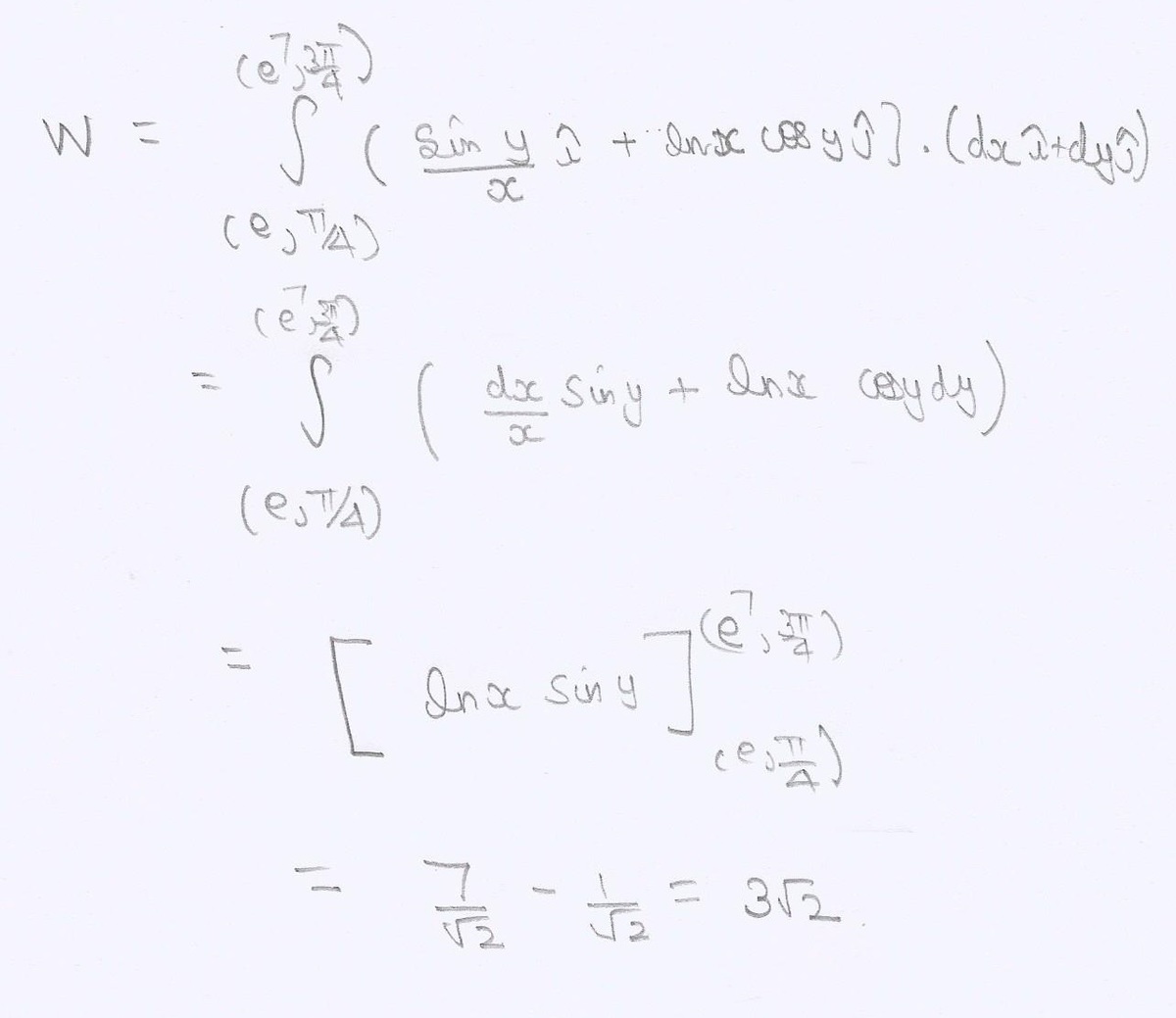Find Work Done by F ?
If a force acting on a particle can be described by the equation F = ( x sin y ) i + ( ln x cos y ) j , then find the work done by F in moving an object from ( e , 4 π ) to ( e 7 , 4 3 π ) .
This section requires Javascript.
You are seeing this because something didn't load right. We suggest you, (a) try
refreshing the page, (b) enabling javascript if it is disabled on your browser and,
finally, (c)
loading the
non-javascript version of this page
. We're sorry about the hassle.
1 solution

i think it should be 2 lnx siny.
Log in to reply
I f f ( x , y ) = g ( x ) h ( y ) , f 1 ( x , y ) = ( g 1 ( x ) d x ) h ( y ) + g ( x ) ( h 1 ( y ) d y ) ∫ ( g 1 ( x ) d x ) h ( y ) + g ( x ) ( h 1 ( y ) d y ) = f ( x , y )
I hope it helps.
Notice that the vector field is conservative since it is the gradient of ln(x)sin(y). So the line integral is simply the change in the value of this function between the two points (according to the gradient theorem)